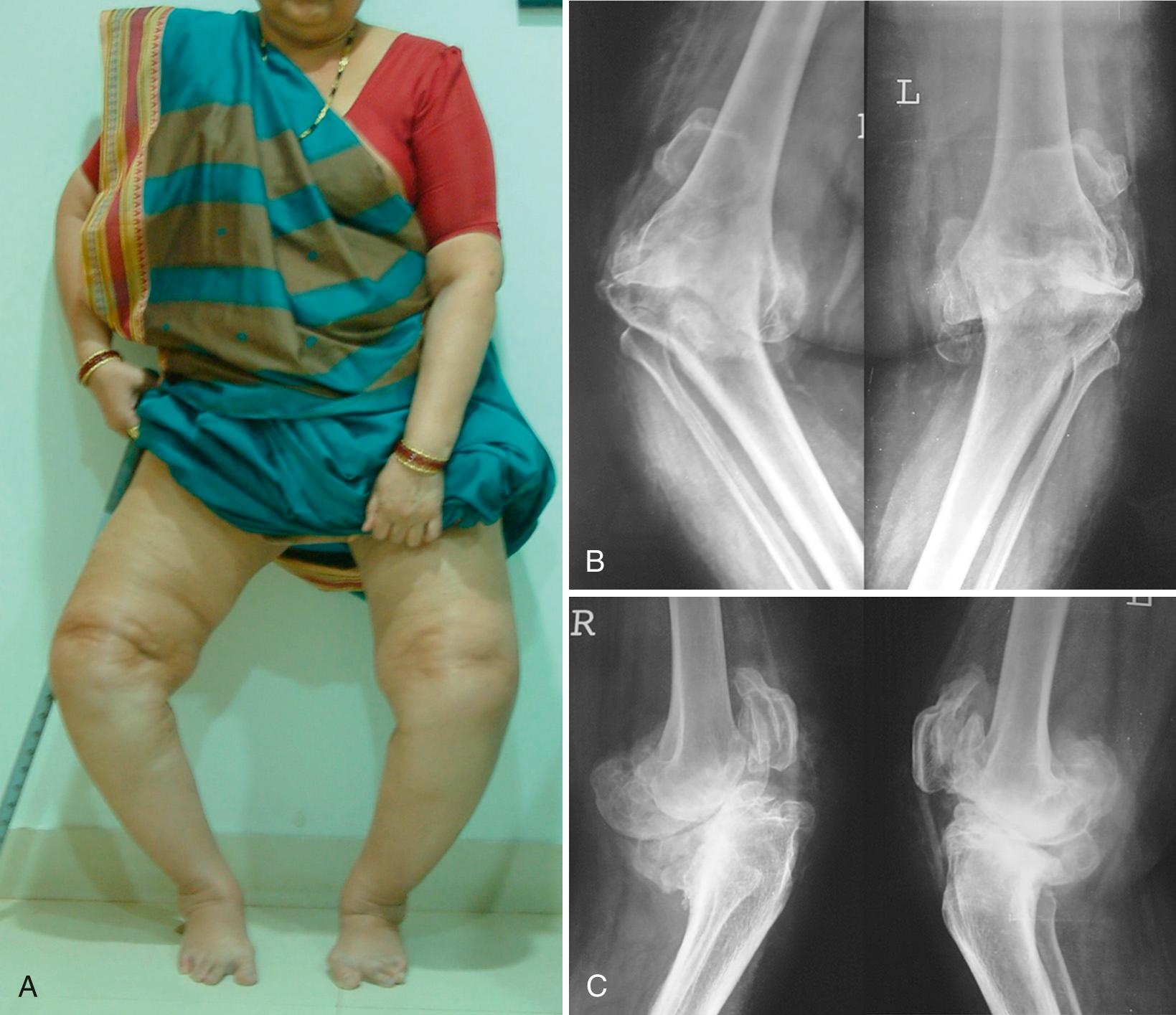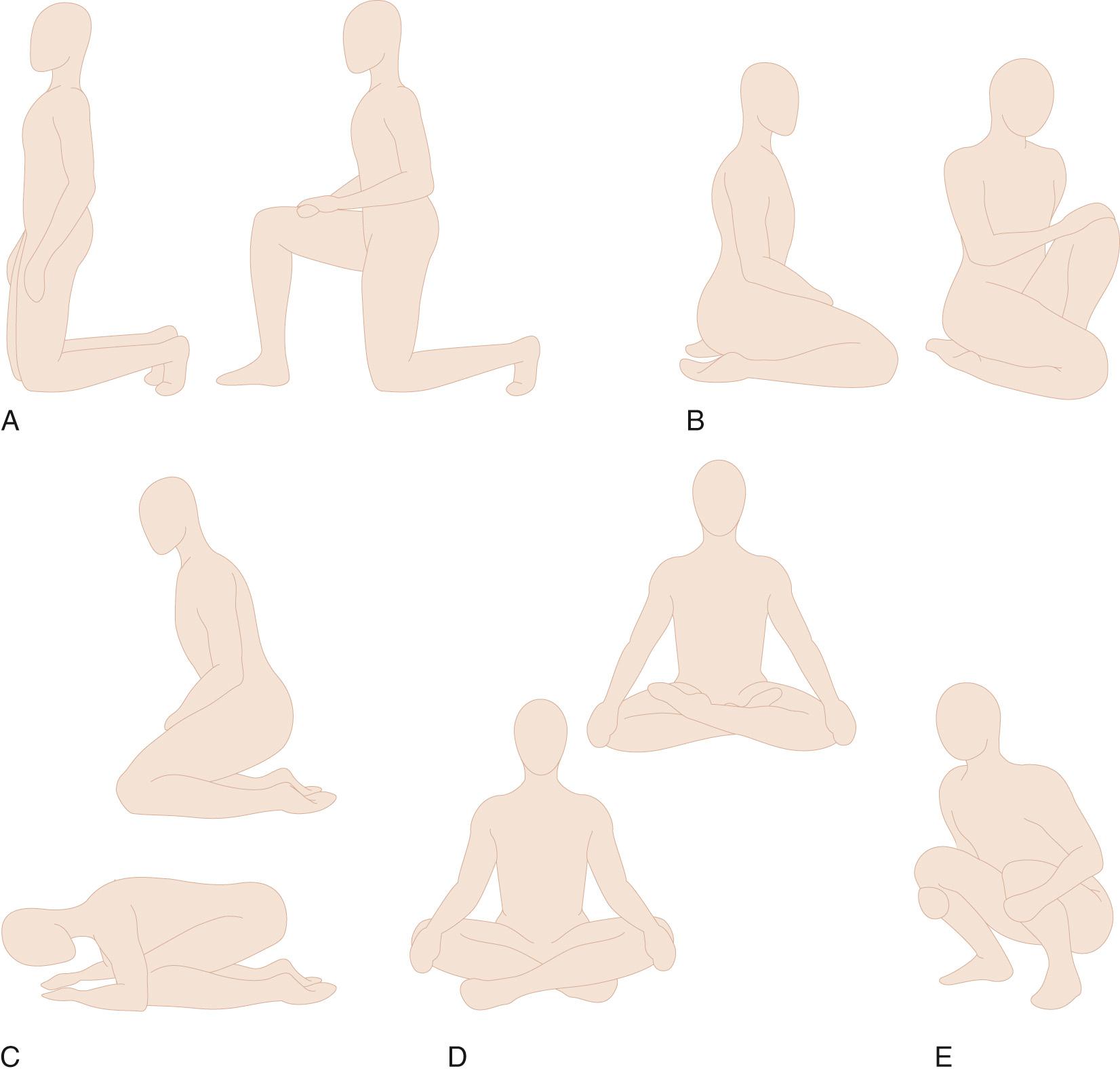Physical Address
304 North Cardinal St.
Dorchester Center, MA 02124
Five decades of knee arthroplasty in the Western world have seen periodic modifications in implant design and technique to suit and match the requirements of the white population. The past two decades have seen an unprecedented surge in the demand for this surgery in Asian populations. In Asian populations knee arthroplasty is being performed using the same implants as in the Western world. With experience, a number of characteristics of the Asian knee that are distinctly different from the knees of white populations have been brought to the fore.
This chapter presents the scientific data and knowledge gained so far, with regard to the demographic differences, kinematic differences, and morphologic differences related to the knee and studied across Asian populations. The chapter also discusses their impact on the surgery of knee arthroplasty and their outcome. Lastly, it points to future directions to address the Asian knee characteristics and optimize its arthroplasty results.
Asians are more prone to knee osteoarthritis (OA) than that of the hip. The Asian hip to knee OA ratio is 1 : 9 as compared with 1 : 2 or 1 : 3 in white populations. In patients undergoing knee arthroplasty the incidence of metabolic syndrome (body mass index (BMI) >30 kg/m 2 , hypertension (HT), diabetes mellitus (DM) and hypercholesterolemia), which is a known risk factor of OA, was found to be 2 times higher in Asian compared with white populations. Asian male to female ratio of knee OA is 1 : 4, as compared with a ratio of 1 : 1.5 in white populations. It has been interestingly found that if OA was diagnosed on radiologic criteria alone, no significant difference in male to female prevalence remained in both populations. In China and India, prevalence of OA in rural populations is reported as almost double to that in the urban population.
Asian populations living in Western countries presented for total knee arthroplasty (TKA) at a stage when their knee function had deteriorated to a level much worse than that presented by white populations. In our practice, one-third of Asian patients approach with severe deformities and late presentations ( Fig. 25.1 ), usually with medial tibial defect in varus deformity. We prefer to treat the larger defects with autologous bone grafting, using a unique technique involving compression across the interface.

Asian populations have been found to have the lowest peak bone mineral density (BMD), the highest being in the Afro-Caribbean population, followed by white populations. BMD in Indian women may be up to 25% to 30% lower than American-European scores.
In many Asian countries, vitamin D deficiency has been found to be rampant. Vitamin D deficiency is the cause of rickets in children and osteomalacia and osteoporosis in adults. Genu varum or genu valgum has been described as the most common deformity in patients with rickets. Varus knee is the main manifestation of osteomalacia.
One study has reported that a 4% to 6% increase in varus alignment increased the loading in the medial compartment by up to 20%. Such increased stress on the articular cartilage could lead to degenerative changes. One other study found malalignment to be a risk factor for development of OA. Varus deformity as a causative factor for OA needs to be evaluated further. However, a systematic review has shown that after OA has set in, a malaligned knee joint is more susceptible to progression of the OA.
We recommend obtaining vitamin D blood levels in all Asian patients and treating any deficiency preoperatively. In our patients we have noted vitamin D–deficient patients showing poor Western Ontario and McMaster Universities (WOMAC) scores.
The one trait distinctive of cultural activities across Asia is the requirement for the knee to go into deep flexion. Asian toilet facilities require a squatting position, prayer positions for Hindus and Buddhists involve sitting on the floor in a cross-legged position, a prayer position of Muslims entails kneeling in the Namaz position, the tea ceremony of Chinese involves kneeling in a different posture, and formal sitting in Japanese entails kneeling in the seiza position ( Fig. 25.2 ). The popular yoga practice in Asia and certain Indian dance forms require the knee and many other joints to go into deep flexion and hyperextension. These activities cannot be overlooked because they are performed from early childhood and often several times a day.

Kneeling probably is the most common floor-based activity performed across the world. There are various forms of kneeling. White populations kneel with lesser hip and knee flexion compared with kneeling in seiza —a Japanese formal sitting position—or Namaz —a Muslim prayer position (see Fig. 25.2A to C and Table 25.1 ). These different forms of kneeling involve differences in the position of the ankle and torso.
| Parameters | Full Squatting | Cross-Legged Sitting | Kneeling ( Namaz , Seiza ) |
|---|---|---|---|
| Hip flexion | 95° ± 27° | 80°-101° | 67°-119° |
| Knee flexion | 157° ± 6° | 130°-142° | 144°-158° |
| Ankle plantar flexion | 58° ± 14° | Minimal | 32°-37° |
Kinematic studies in knees of white populations have shown that with increasing flexion, there is posterior roll-back of the femoral contact point on the tibia and the lateral condyle excursion is far greater than medial condyle, so much so that in the final phase of deep flexion the lateral condyle slides off posteriorly from its contact on the tibial condyle. There is also a subtle but definite and important difference in this movement between white and Japanese populations. In the Japanese the lateral condyle was found to have similar excursion as in the white population study, but the medial condyle remained much more stable with little excursion. Other biomechanical studies have shown that repetitive kneeling can damage the cartilage and menisci in the natural knee, and the increased tibiofemoral contact pressures can lead to polyethylene wear in the implanted knee.
Kneeling kinematics after TKA have been studied to follow normal knee kinematics, although it was observed that knee flexion angles were smaller and patella showed sagittal plane tilting.
Cross-legged sitting, also known as the tailor or lotus posture ( Fig. 25.1D ), involves a complex combination of movements of the hip, knee, and ankle joints. At the hip there is flexion (80 to 101 degrees), abduction (30 to 57 degrees), and external rotation (36 to 52 degrees); at the knee joint there is flexion (130 to 142 degrees) and internal rotation (17 to 34 degrees), and at the ankle there is minimal planter flexion assumed for this posture.
Cross-legged posture in Eastern culture is most frequently assumed while sitting on the floor, which means that it also entails getting into the posture from standing position and rising back into the standing position from the floor. Alternatively, this posture can be assumed on a higher surface, such as a bed or platform, which does not demand the additional maneuver of having to descend and ascend to or from the floor.
Squatting is a resting postural complex that involves hyperflexion at the hip and knee joints, and hyperdorsiflexion at the ankle and subtalar joints (see Fig. 25.2E and Table 25.1 ). Squatting is an age-old posture assumed commonly for toilet facilities in India and other Asian countries. Even after knee OA sets in, squatting continues to be undertaken, especially in rural areas, out of necessity to use the toilet facility. A modified semi- or half-squat position may sometimes be adopted as a compromise. Squatting and partial squatting is also commonly performed as part of yoga, dance, and exercise. Apprehension exists in allowing this activity post-TKA for fear of increased stress on the polyethylene and implant fixation, which could affect the long-term survival. A study by Nakamura et al. concluded that deep flexion did not affect the long-term durability of one high-flex ceramic implant. In addition, a report by Mizu-Uchi concluded that squatting exerts forces 2.2 to 2.3 times the body weight, which is actually equivalent to that in walking. Similarly Thambyah found that tibiofemoral contact force in squatting was not much different than in walking. Indeed the ground reaction force was reported to be higher in walking than in squatting. On the other hand, they found that the tibiofemoral shear force, which is directed posteriorly in normal walking, becomes directed anteriorly in squatting. It was also observed that the descent and ascent from a squatting position lead to higher contact forces. These factors would have bearing on the stresses and fixation of tibial implant when squatting is undertaken after TKA.
Become a Clinical Tree membership for Full access and enjoy Unlimited articles
If you are a member. Log in here